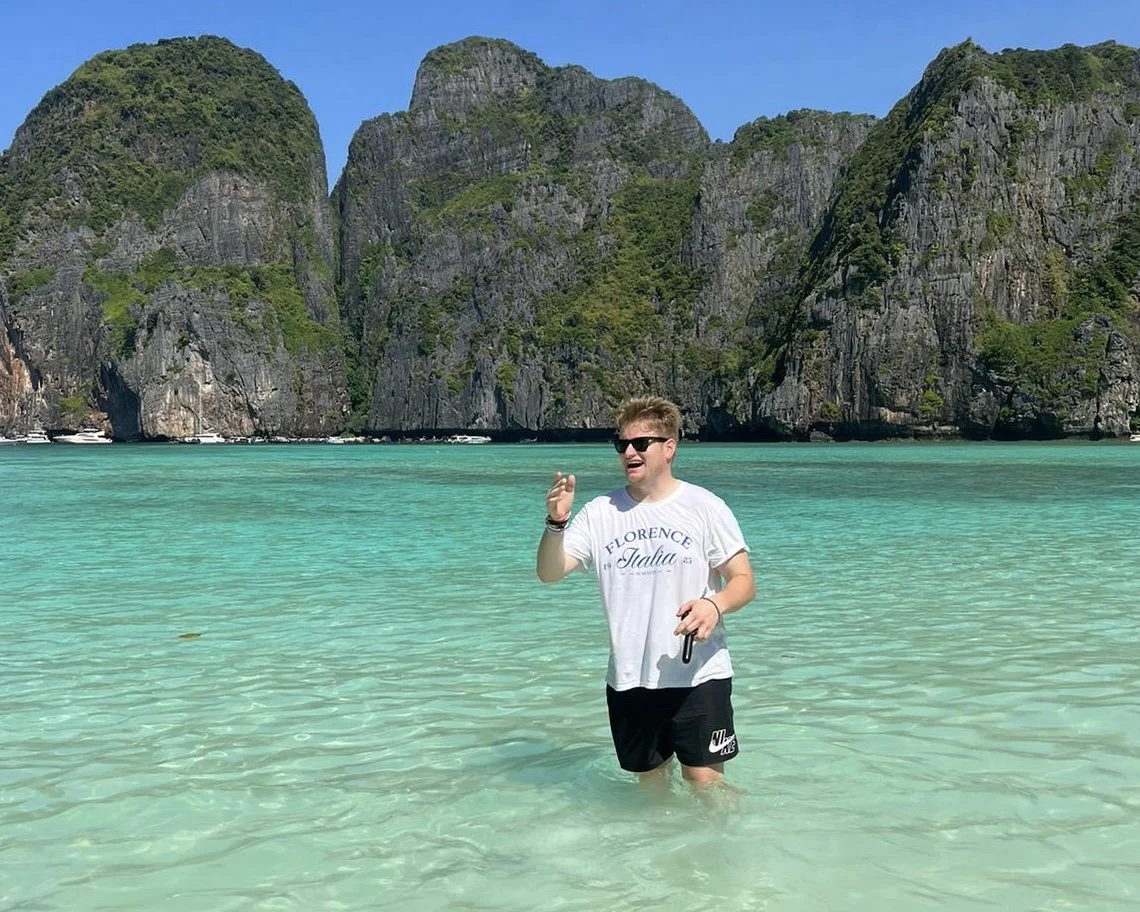Europe daily blog #7: Prague’s communist past makes for a fascinating tour
/Posing in communist dress inside the nuclear bunker. Facial expressions are for effect only.
Following the end of World War II, the communist party rose to power in the Czech Republic and it came with all the characteristics you would expect of such a movement.
Censorship, concrete monuments and buildings and an iron-fisted rule were all prominent features. Communism scared people into behaving like the leaders wanted them to.
To say it was a black and white era would be a gross understatement. In fact, it was supposedly so boring, that people contributed to the baby book as ‘they had nothing else to do.’
The former StB headquarters, which is now used by the Prague police. The StB were Czechoslovakia's answer to the KGB - a secret political police service to make sure communism was abided by.
That was, however, according to our tour guide on the Communist and Nuclear Bunker Tour by Prague Special Tours – an operator in the very centre of the city who offer various tours in Prague in addition to this one.
Starting just outside their office which is conveniently located just around the corner from the Prague Astronomical Clock, the tour lasted a total of two and a half hours.
The first leg of the trip taught us about the first Czechoslovak communist president and ‘untouchable’ Klement Gottwald. Although his reign lasted just two years, he admired the work of Joseph Stalin and implemented similar ideologies of that to the Soviet Union. All the power was at the top, and Gottwald helped to make it that way.
Gottwald’s old mausoleum is one of the visible sights on the tour, where the former leader was mummified and kept. Unfortunately for him, the mummification process didn’t go according to plan and unsuccessful attempts to replace rotting body parts with pieces of plastic culminated in his burial.
We were taken through the process of ‘normalisation’ between the late 1960s and early ‘80s following the Prague Spring – where changes reached the government, allowing more human rights and reducing the amount of political persecution in the country.
Normalisation was meant to get things back to they were before the Prague Spring, but as the Soviet Union began to falter and the Berlin Wall started crumbling, Czechs peacefully protested in an act called the Velvet Revolution. This eventually led to the fall of communism in Czechoslovakia and the formation of two separate countries – the Czech Republic and Slovakia.
Our guide talked us through the history in detail, and dotted in humorous anecdotes to bring his presentation to life.
The entrance to the Prague nuclear bunker. It looks this way as it used to serve as a bar at one point in its lifetime.
The main event, of course, was Prague’s nuclear bunker – a three-week home for some of Prague’s citizens constructed out of fear of a nuclear attack on the city during the Cold War.
The stairs leading down to the bunker.
We were told that the bunker was built to house 5,000 people, and if filled to full capacity would give everyone just half a metre squared of space.
We entered via a downward spiralling staircase, wrapped helically around a space that had been converted into a climbing wall. That was until it was shut down for not meeting EU regulations on emergency exits. It had also previously been used as a bar.
There were two things that hit me when we went down to the bunker – it was extremely cool in the concrete corridors, and there was a smell of what can only be described as a mix between damp and paint fumes.
The decontamination chamber which, inconveniently, was nowhere near the bunker's entrance.
If there had been 5,000 people down there for three weeks, it would have been neither cool nor smelling of something relatively nice in comparison.
The bunker was also made to be ‘suicide proof,’ which meant curtains instead of doors on each of the toilets and no mirrors.
Some of the corridors inside the bunker are claustrophobically narrow.
The bunker also houses a big collection of Cold War memorabilia, and we were able to try on some of the outfits, as well as get up, close and personal with defunct weaponry.
Guns and gas masks - just a handful of the memorabilia on display at Prague's nuclear bunker.
With a price tag of 600 CKZ (approximately £20) for adults and 500 CKZ (£16.70) for students the Prague Communism and Nuclear Bunker tour was a great way to spend some of our time in the city, and comes highly recommended.























Europe is home to some of the planet’s best party scenes, but where are the continent’s best nightlife destinations? Read this post to find out.